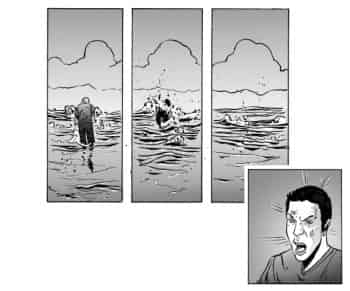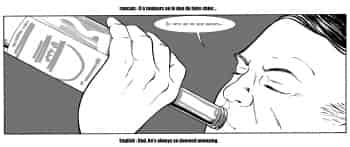Bonus
-
References in the story “Gunrunner”
The character of Edwin in “Gunrunner” was directly inspired by a death notice found in the September 2012 issue of The Economist. It described one Edwin P. Wilson, a shady, little-known member of US counterespionage, who had been nicknamed Gunrunner. We liked the profile so much it made its way into a story.
-
In “A Dead Man,” why doesn’t Jason react after he stabs Tucker?
Some of our readers wanted to know why Jason just stood frozen while Tucker plunged into the ocean (in “A Dead Man”). We really don’t have an answer for this. The scene came to us like that and we thought it worked well, particularly since it is imbued with a strong sense of the illogical.
Also, initially, Jason was supposed to shoot Tucker with a small firearm hidden on his calf. We changed this for a knife because it requires direct contact. A gun would have allowed Jason to fire on Tucker as he disappeared into the water.
-
Team-centred stories
Tony Guerrero said that, in team stories, the disappearance of one character didn’t really have an impact (“When Main Characters Disappear from their Comic Books,” www.comicvine.com, April 10, 2012). On the other hand, Guerrero had said, a few weeks before that, that this type of situation held the most suspense because it’s more difficult for the reader to predict the outcome (“Does Knowing The Hero Always Wins Affect Reading Enjoyment?” www.comicvine, March 20, 2012).
-
What you didn’t see in “A Free Man,” “A Man to Kill” and “Dead Man”
Initially, Tucker was going to have to be tracked because, in a previous story, he had seen his parents. While this idea was part of our initial story plotting, we couldn’t find a way to work it into the stories. We didn’t try too hard, though, because we decided that such a meeting would have been just too much of a coincidence. So we dropped that, and now, Valasquez’s reaction seems even more of a threat for the rest of the staff.
-
But what were they saying? (Rude Awakening)




